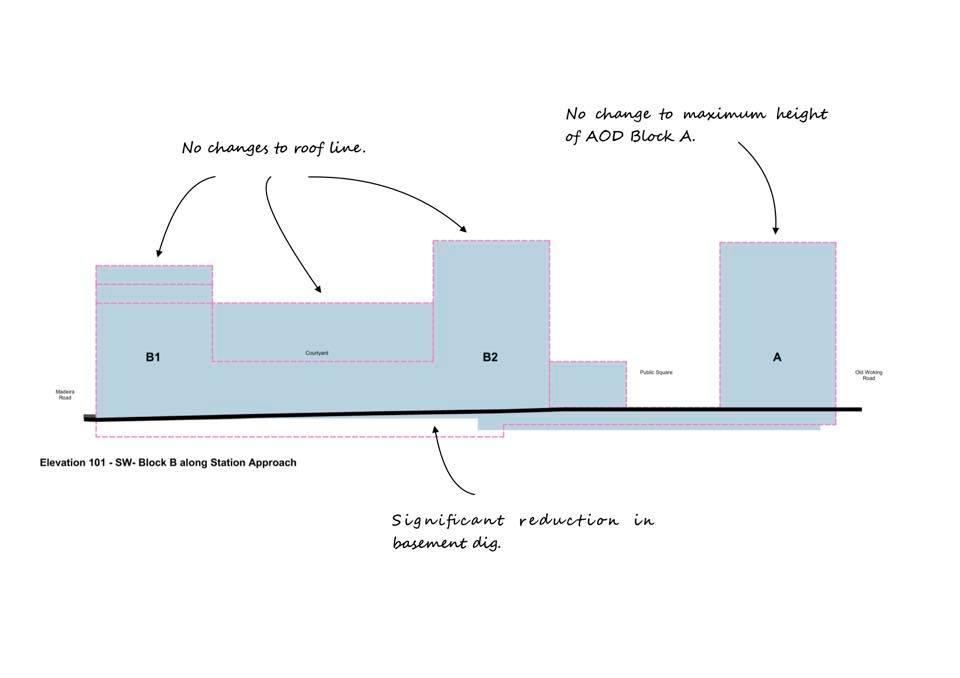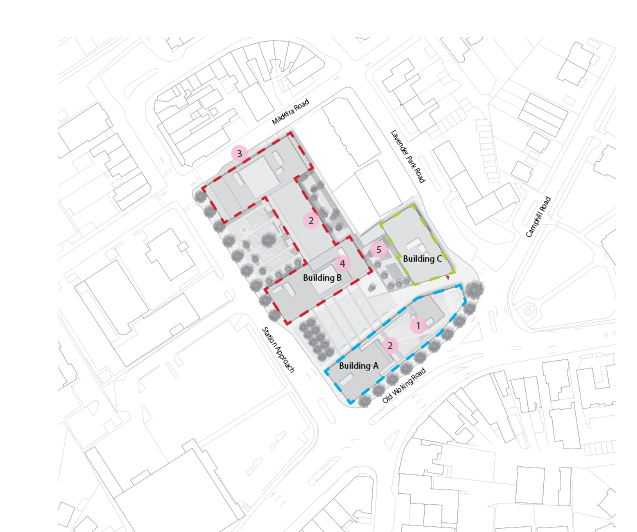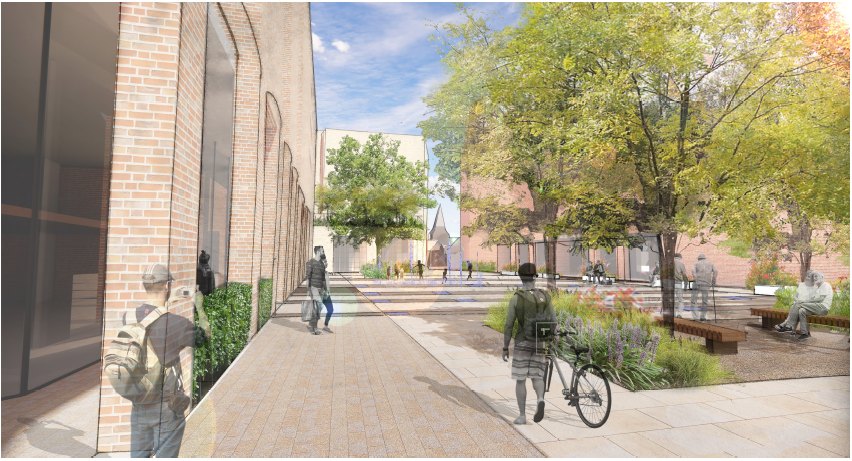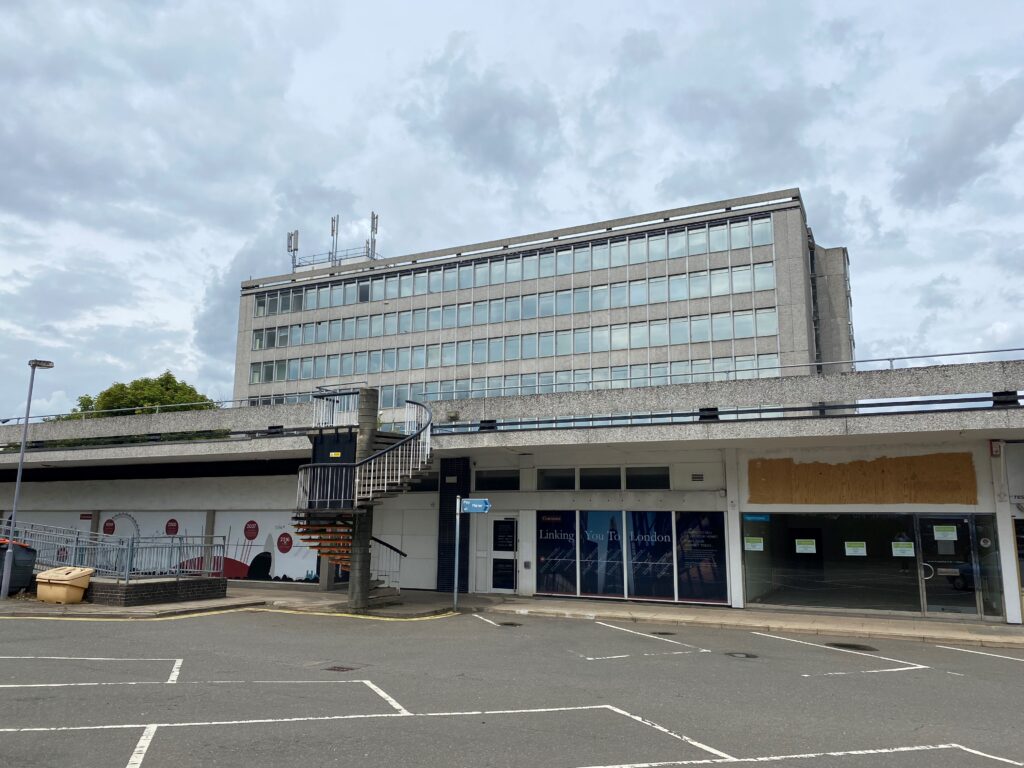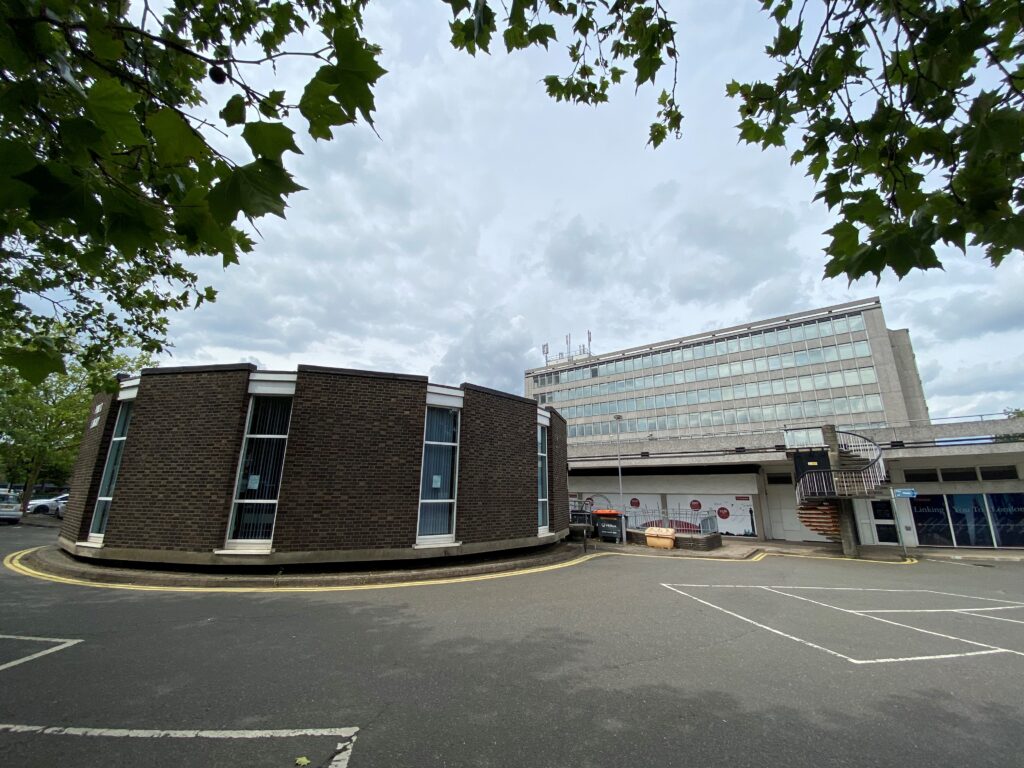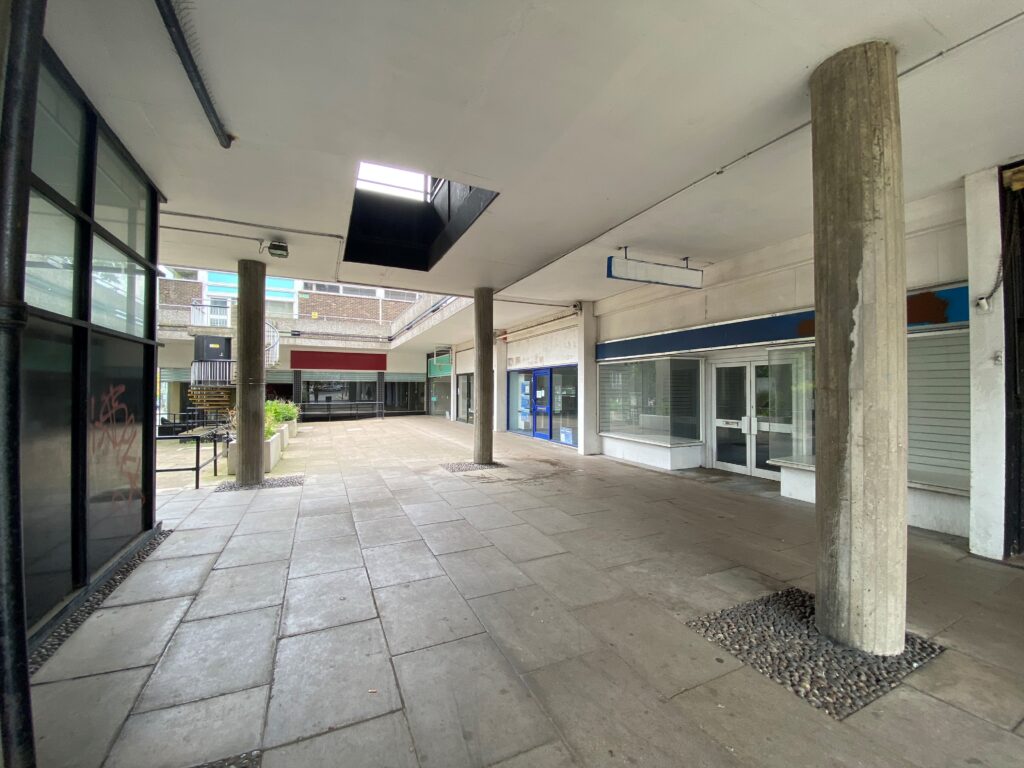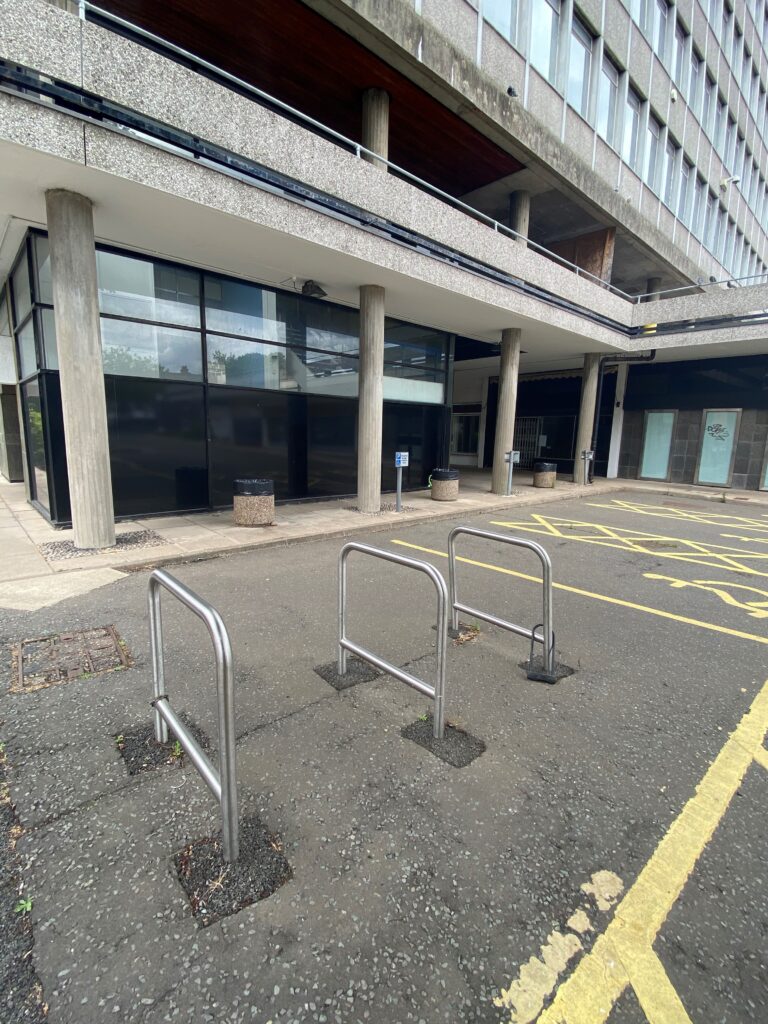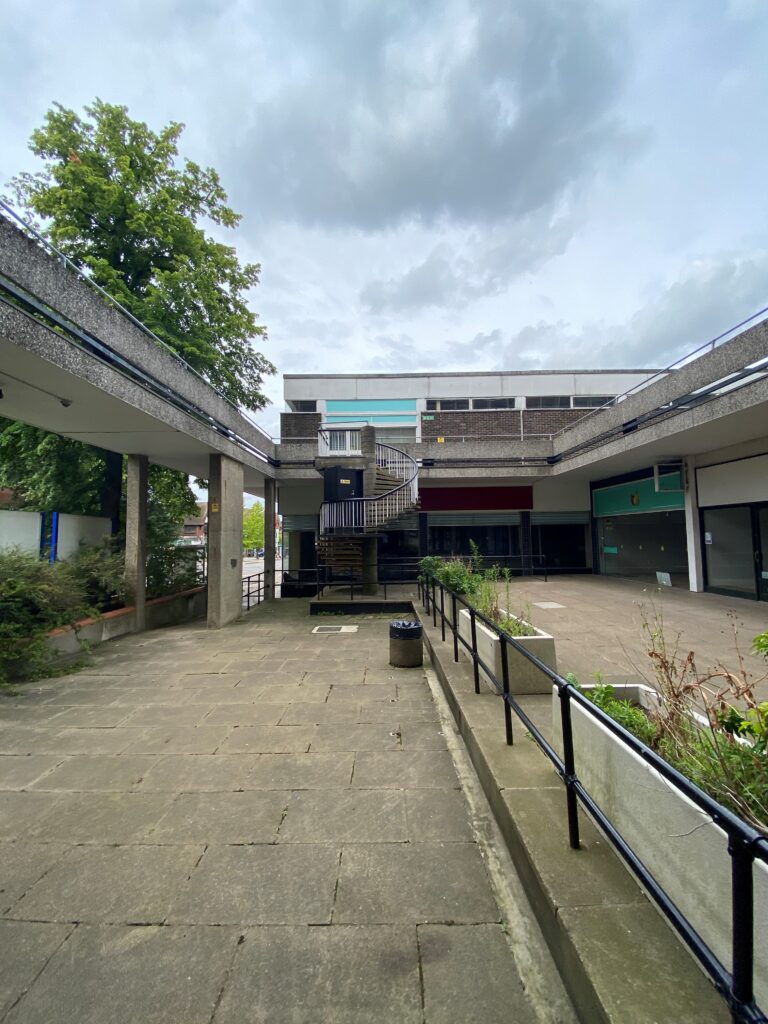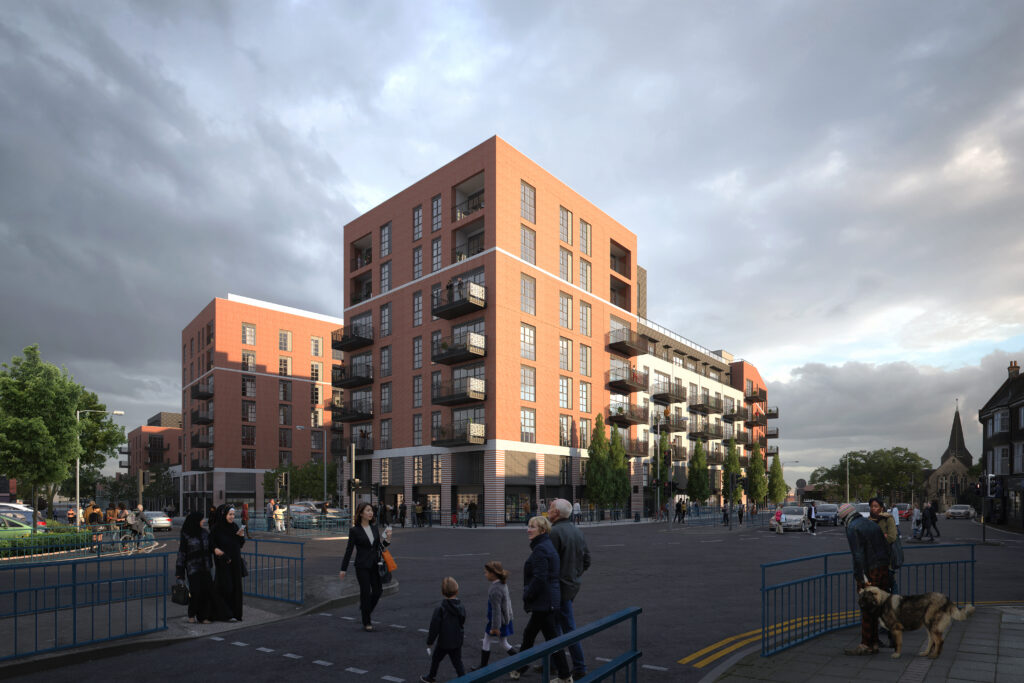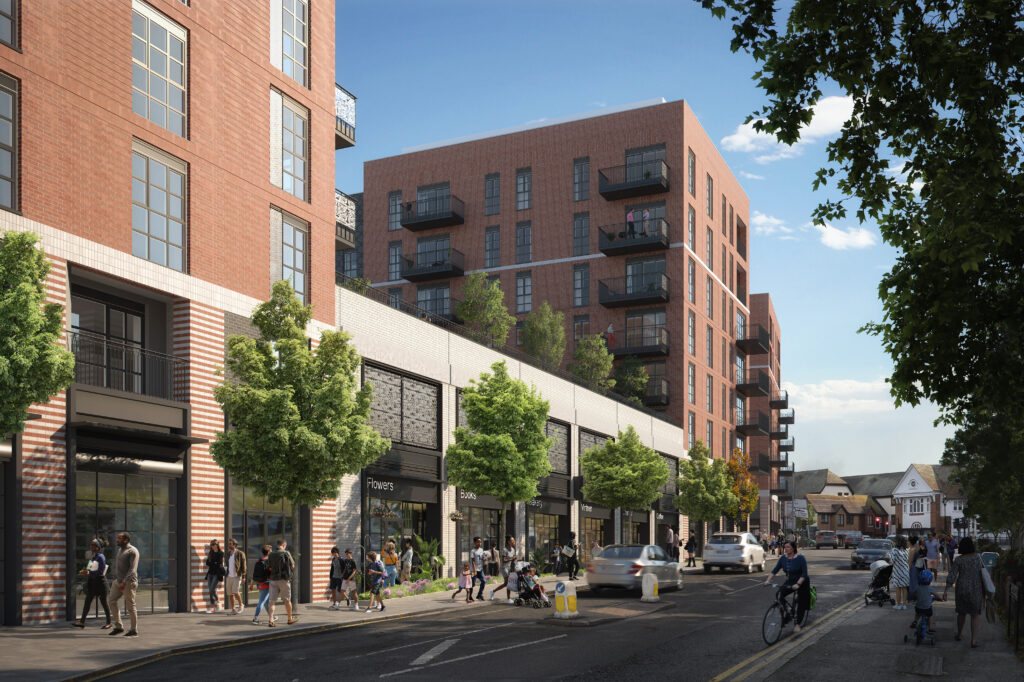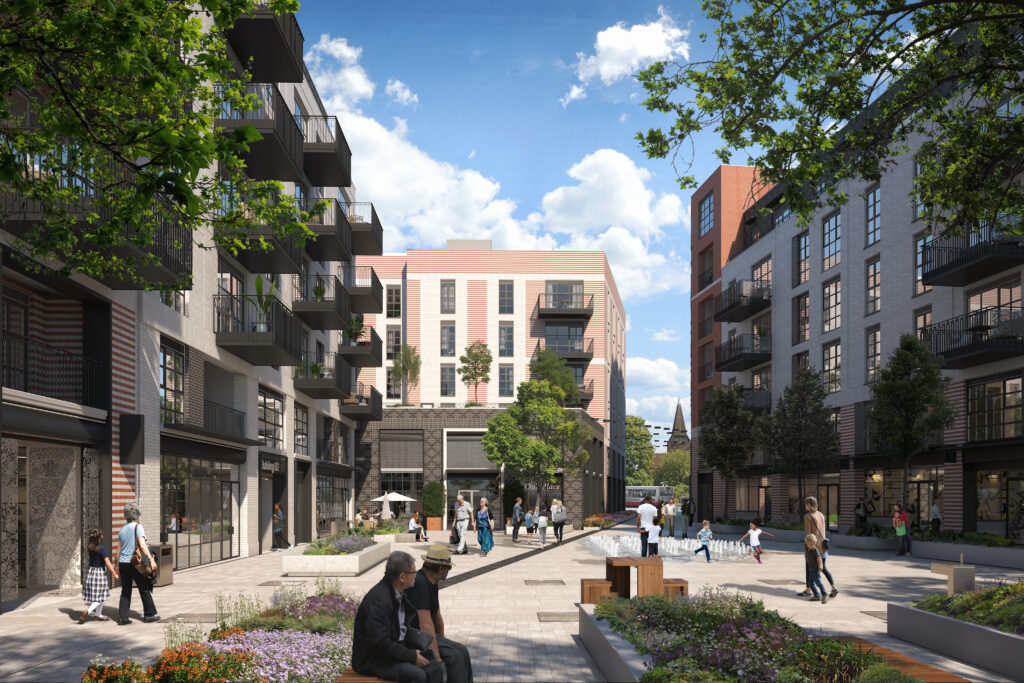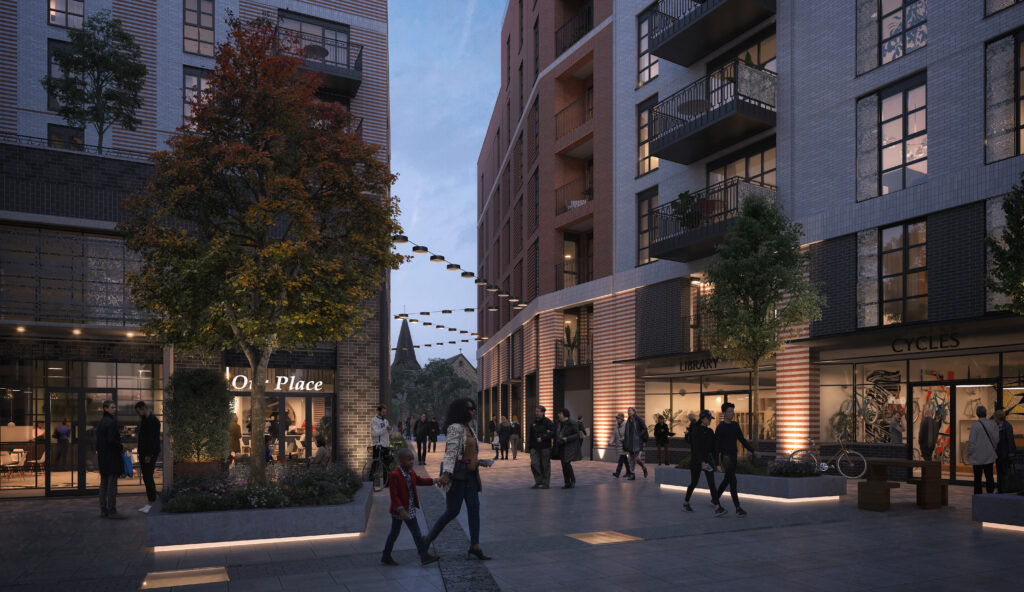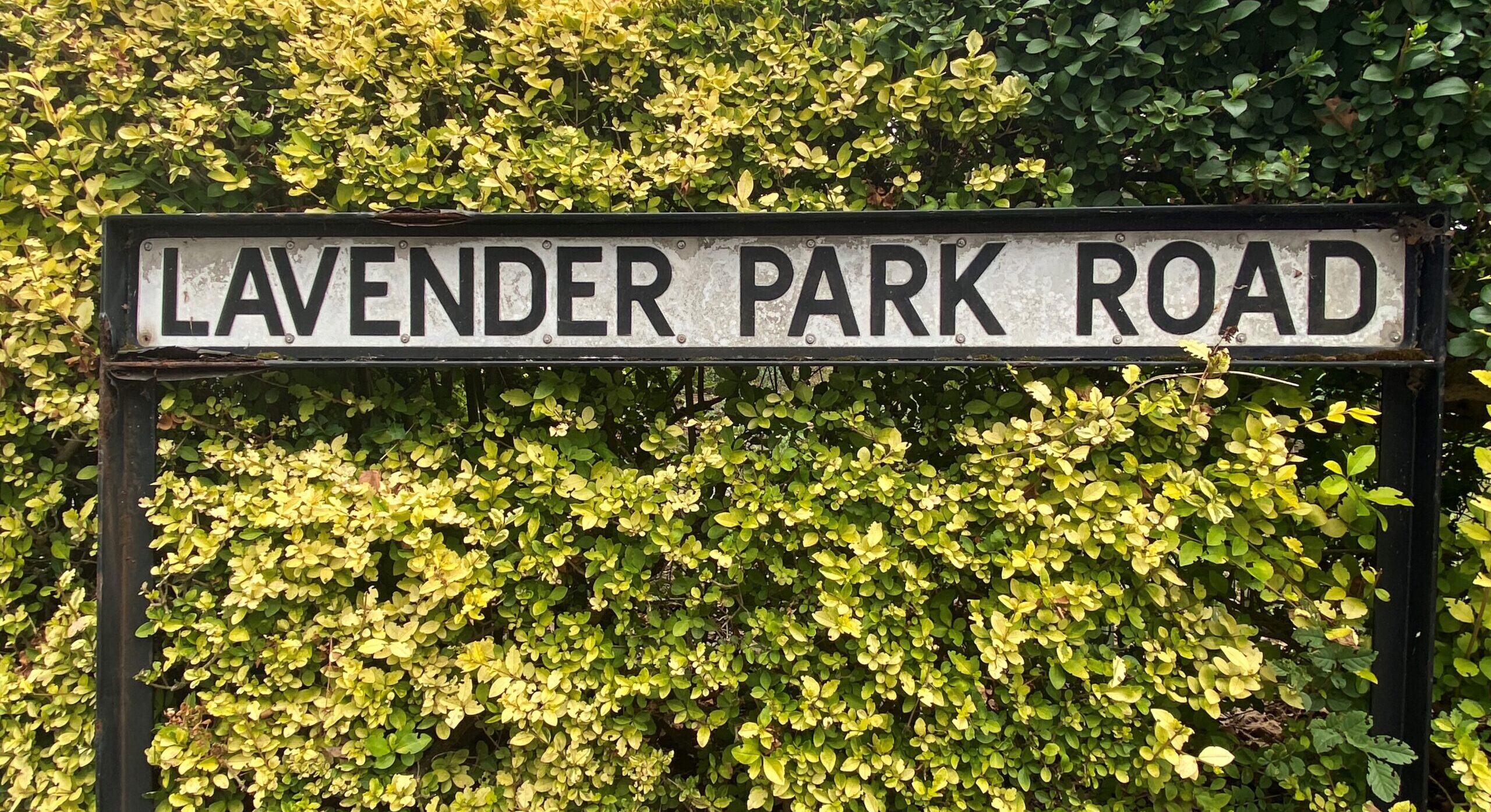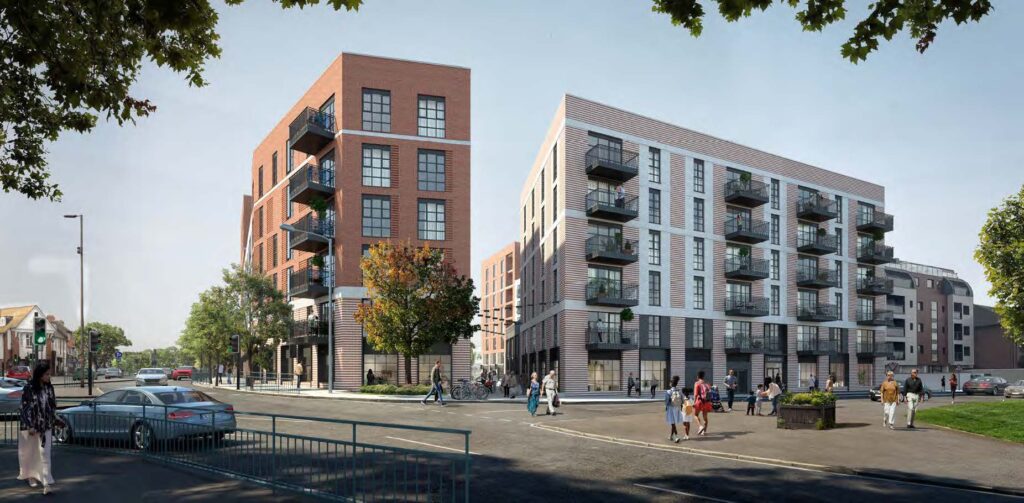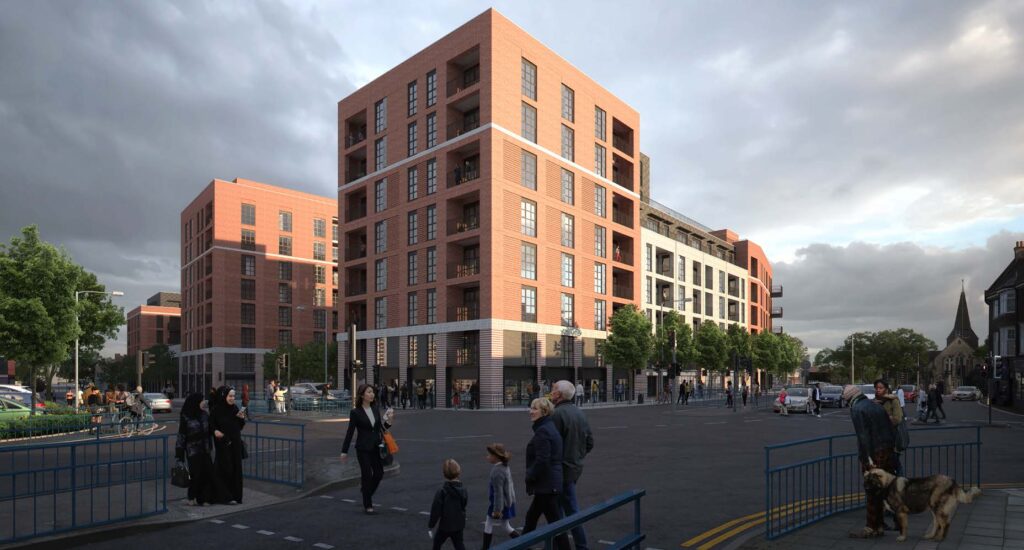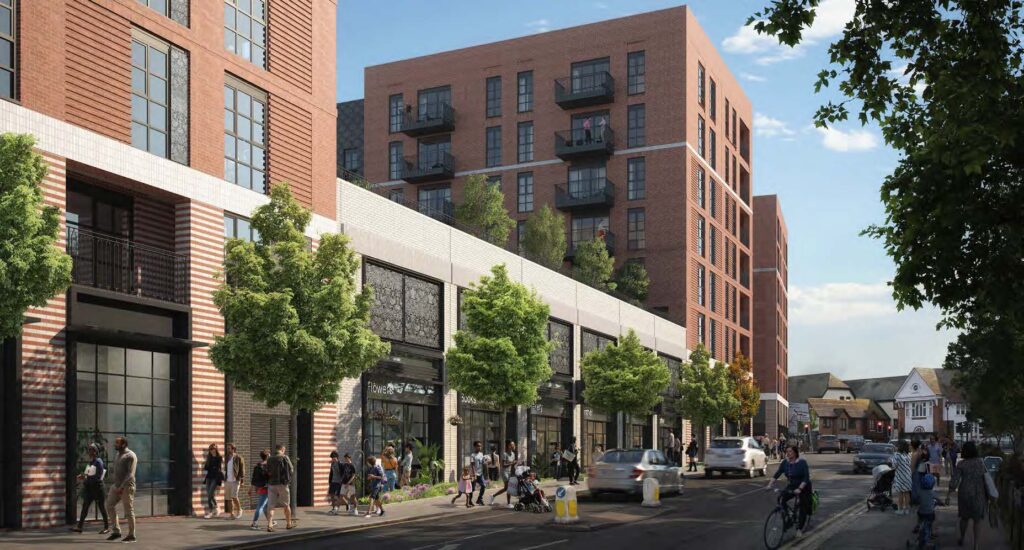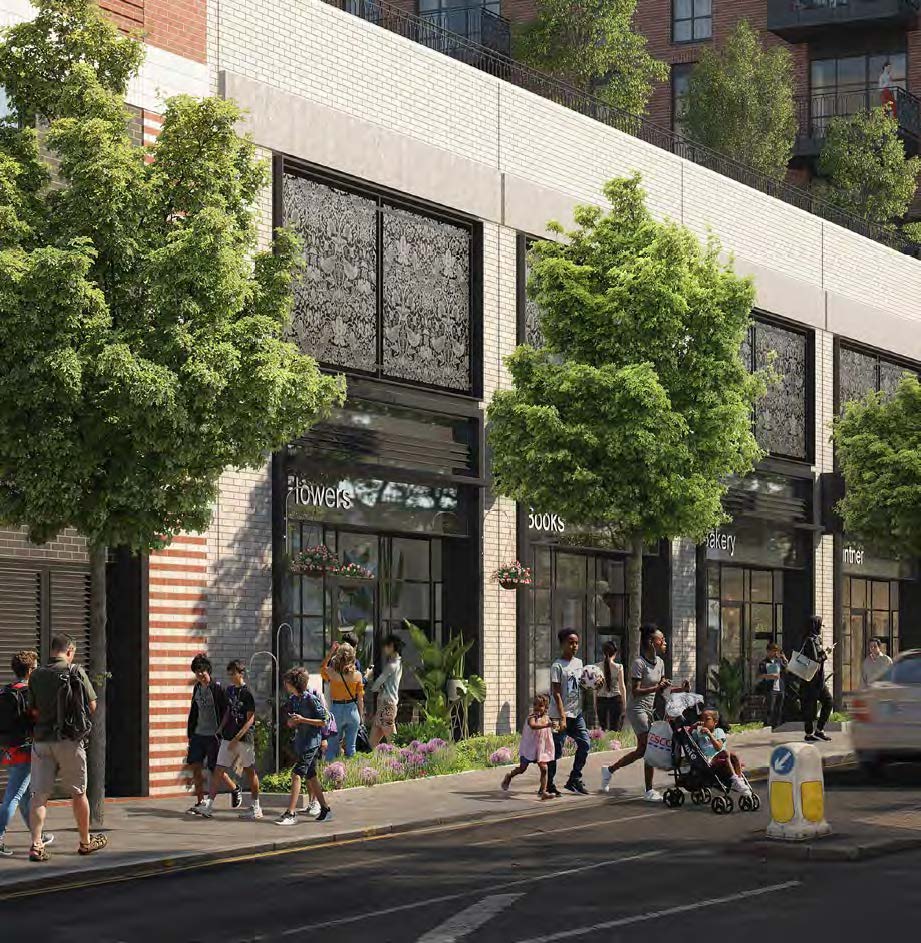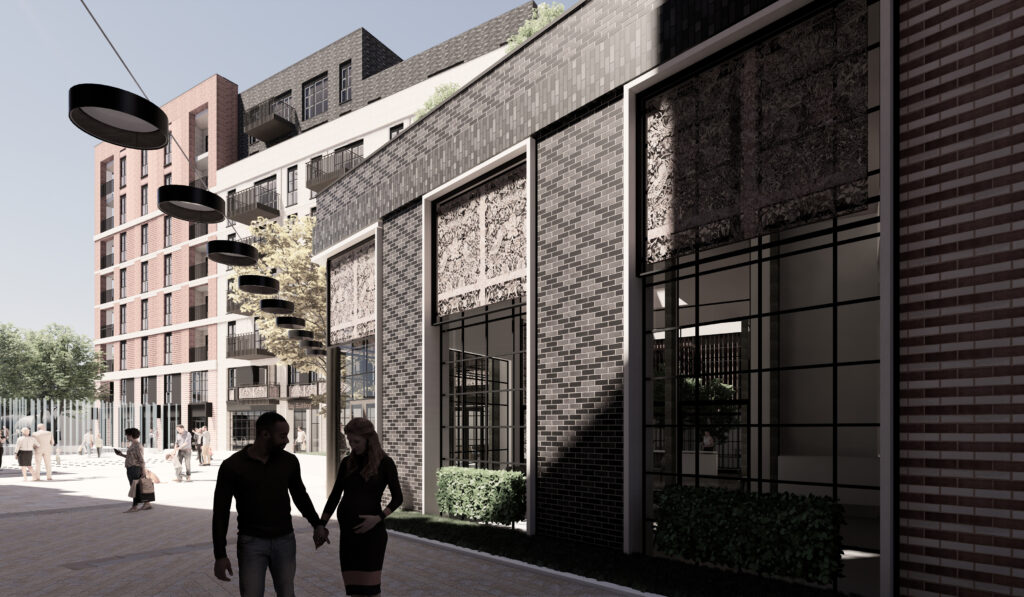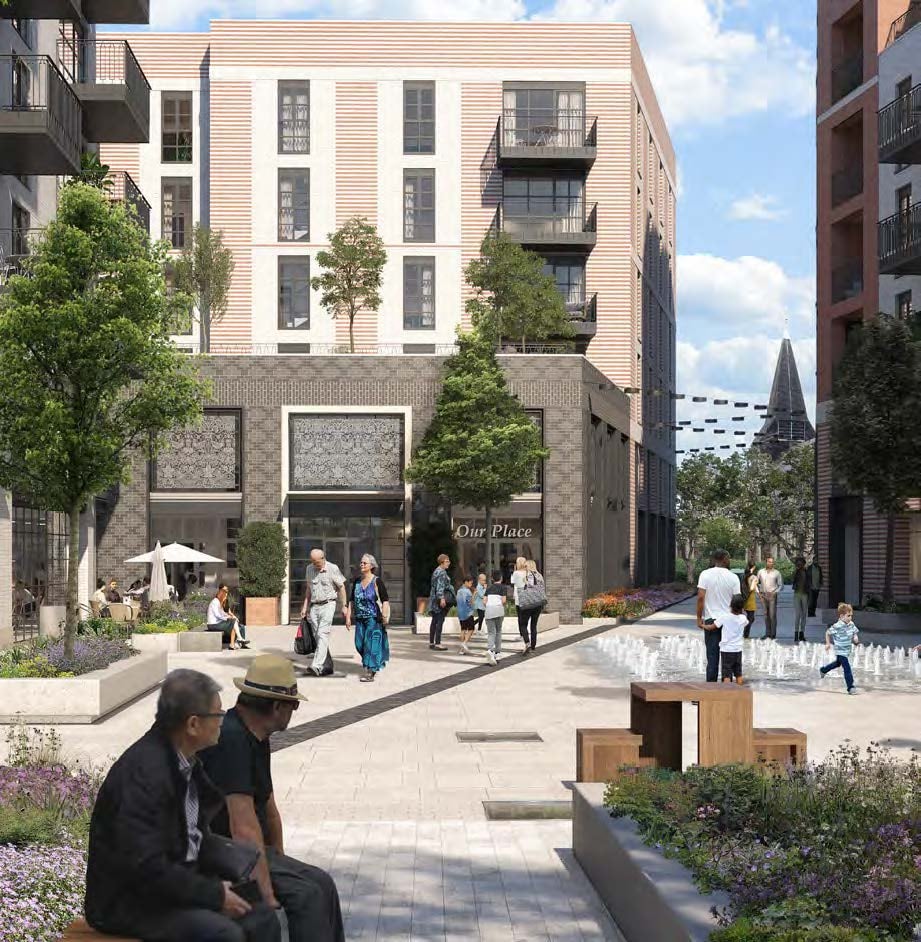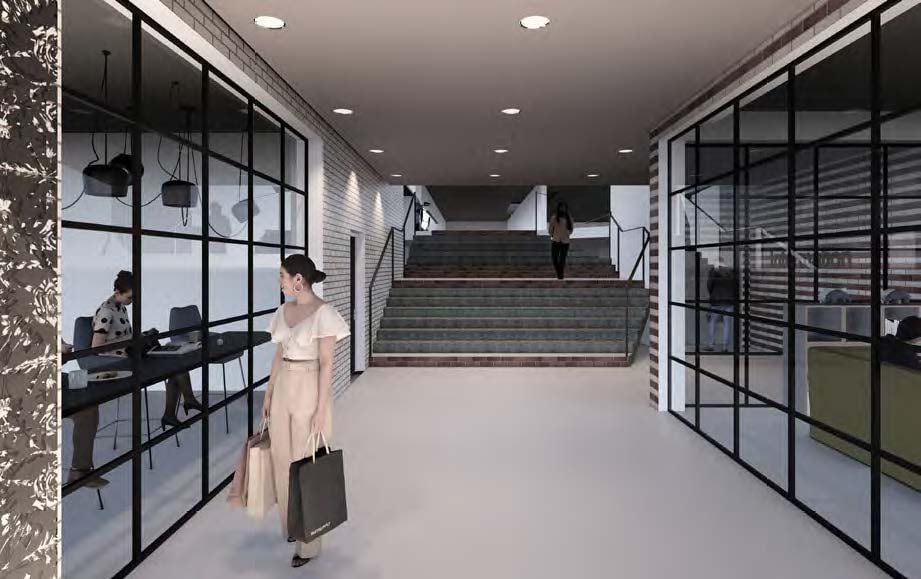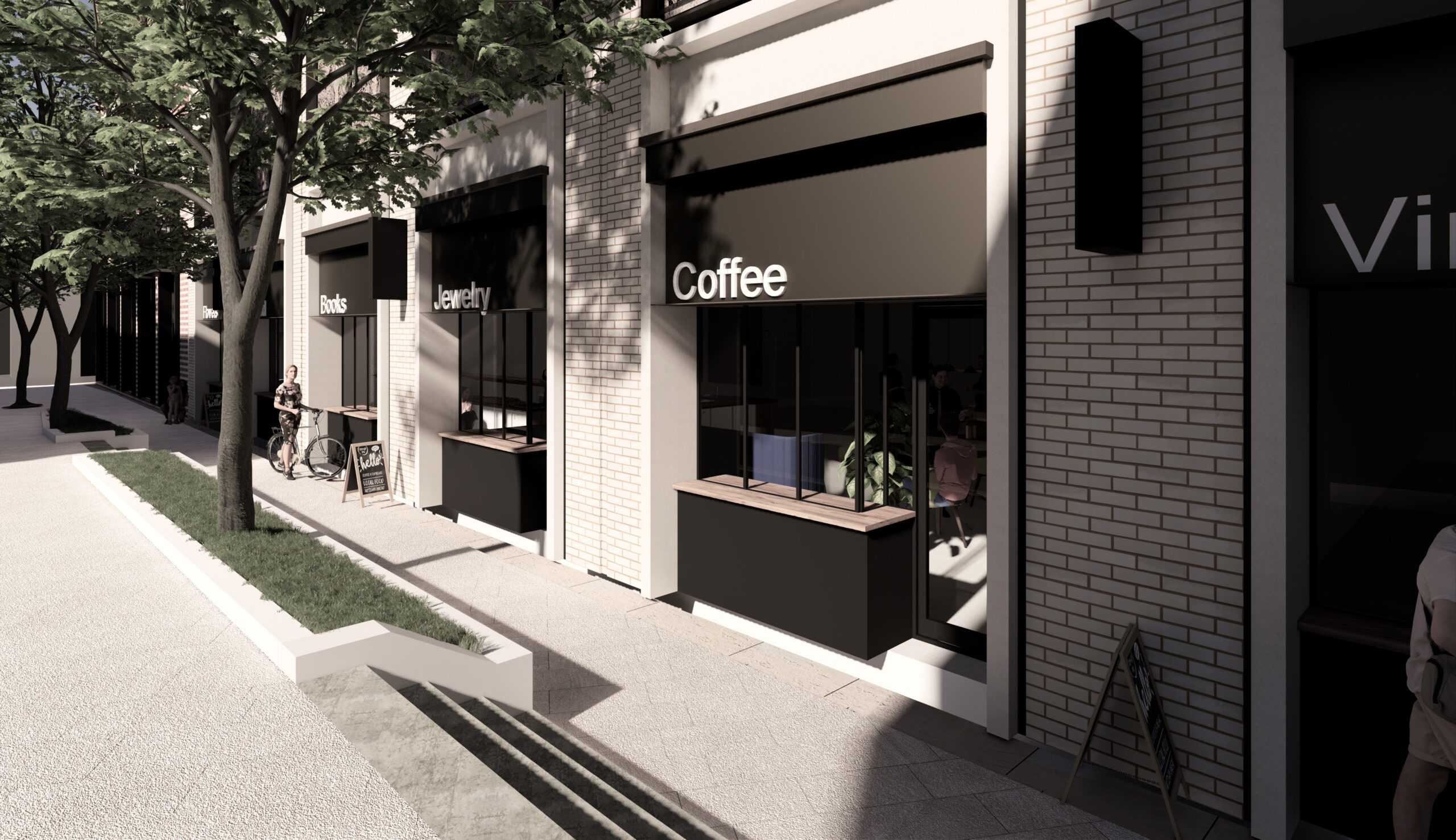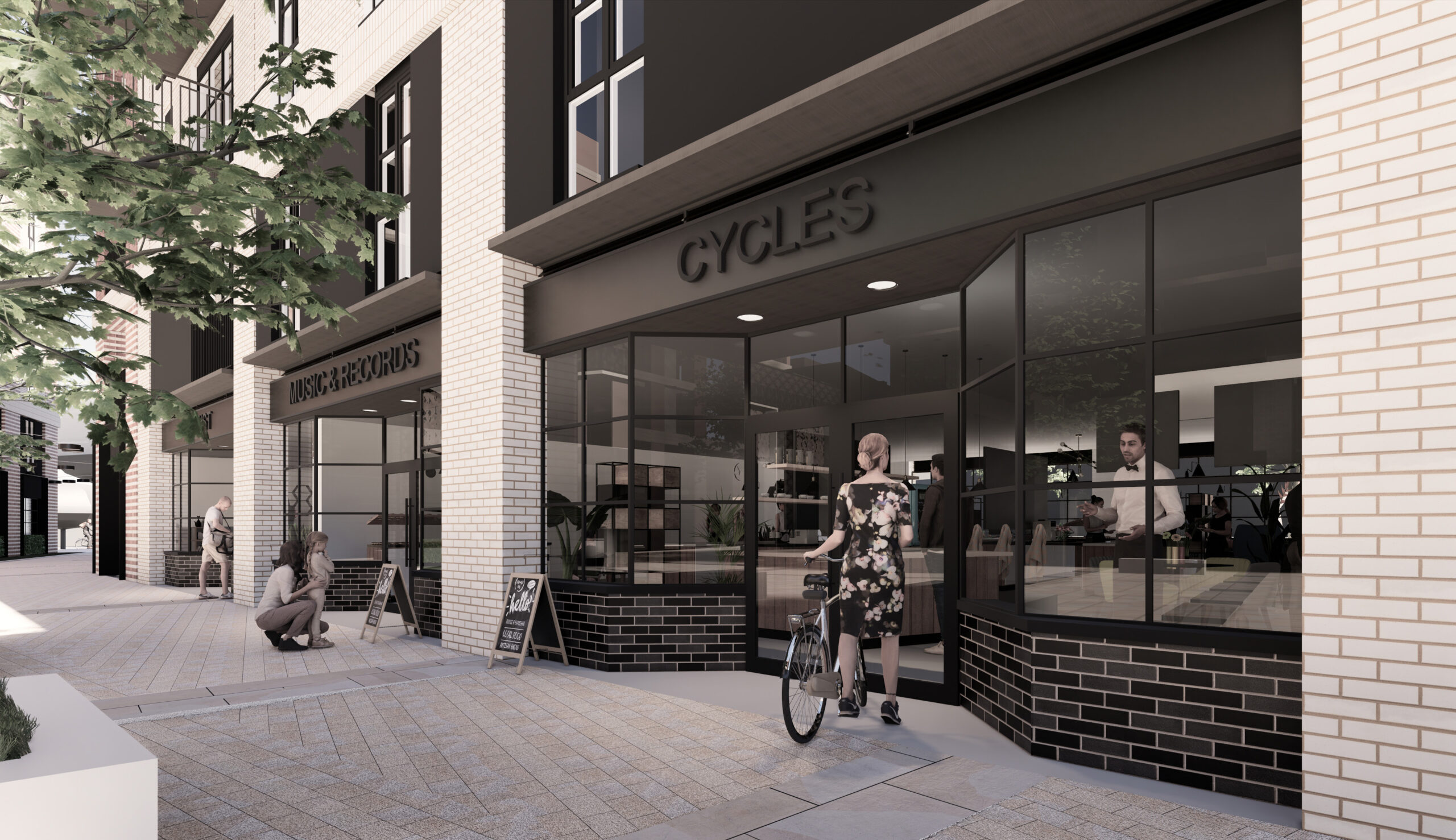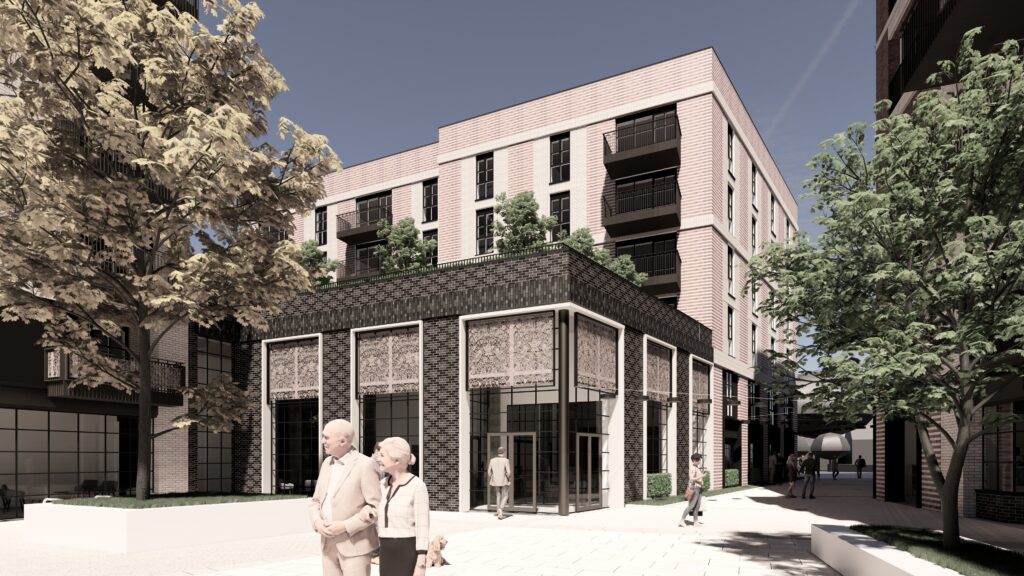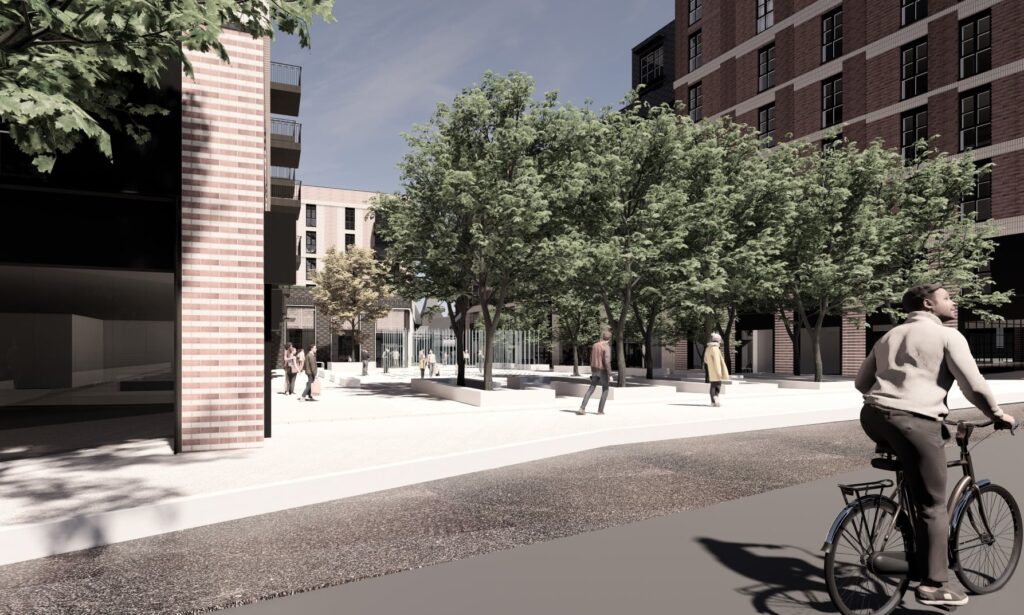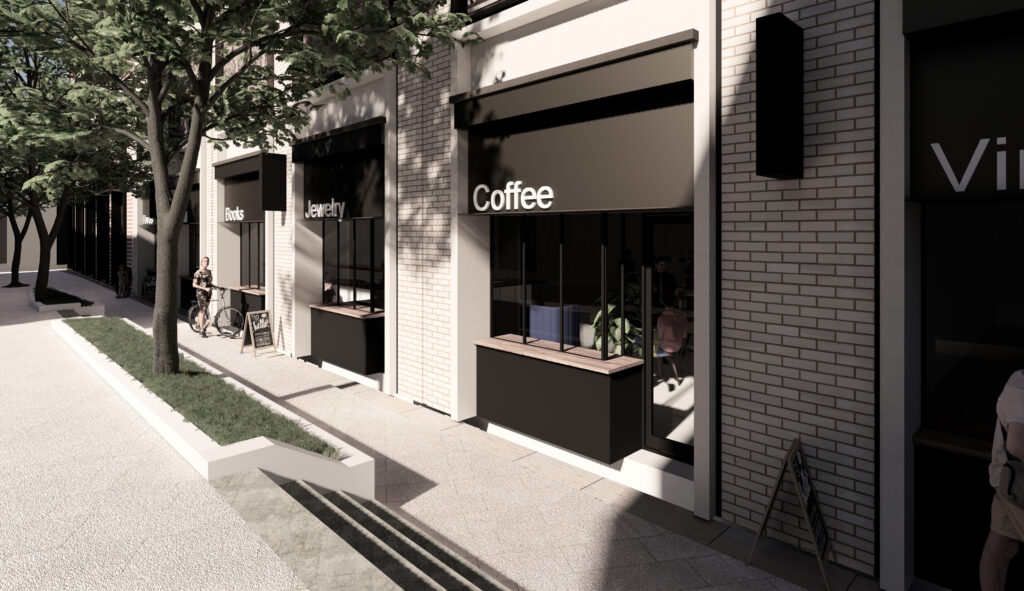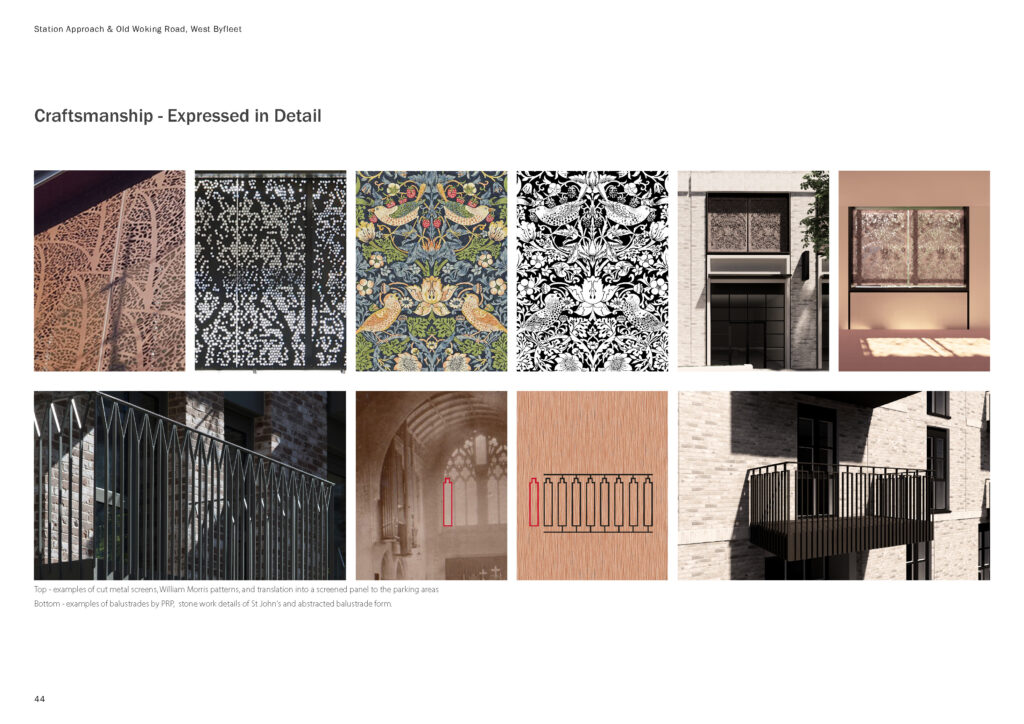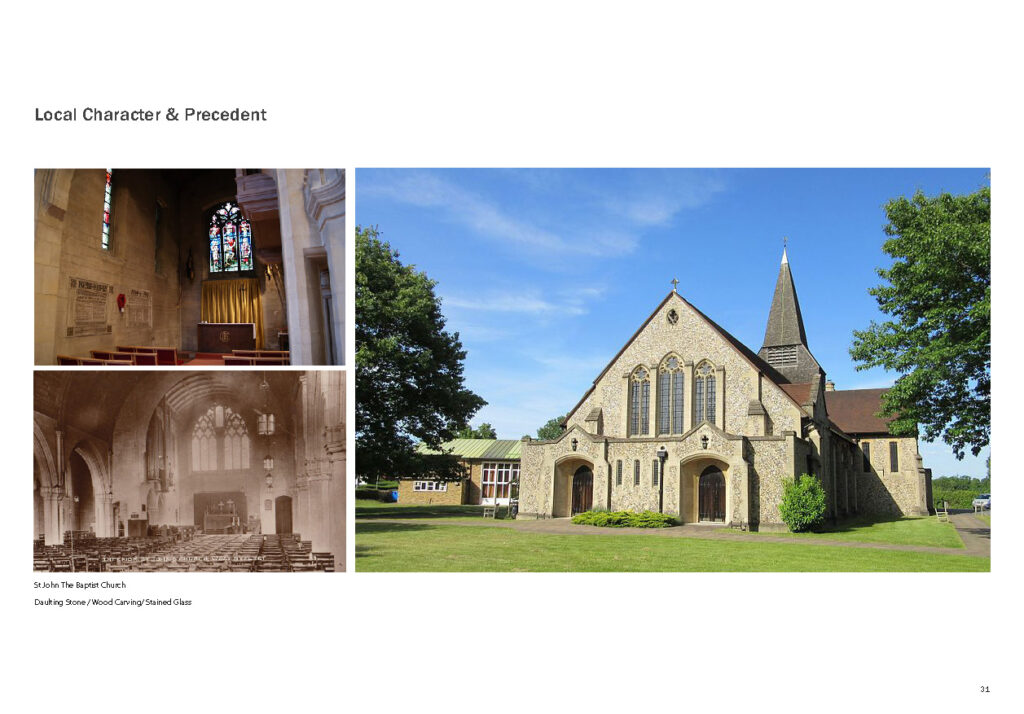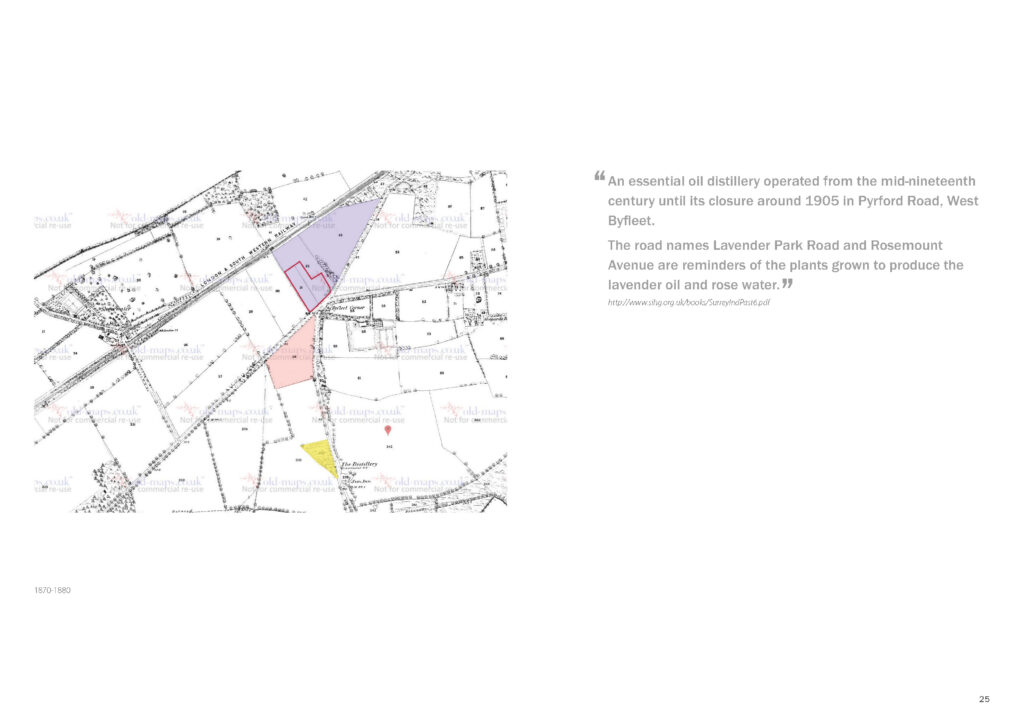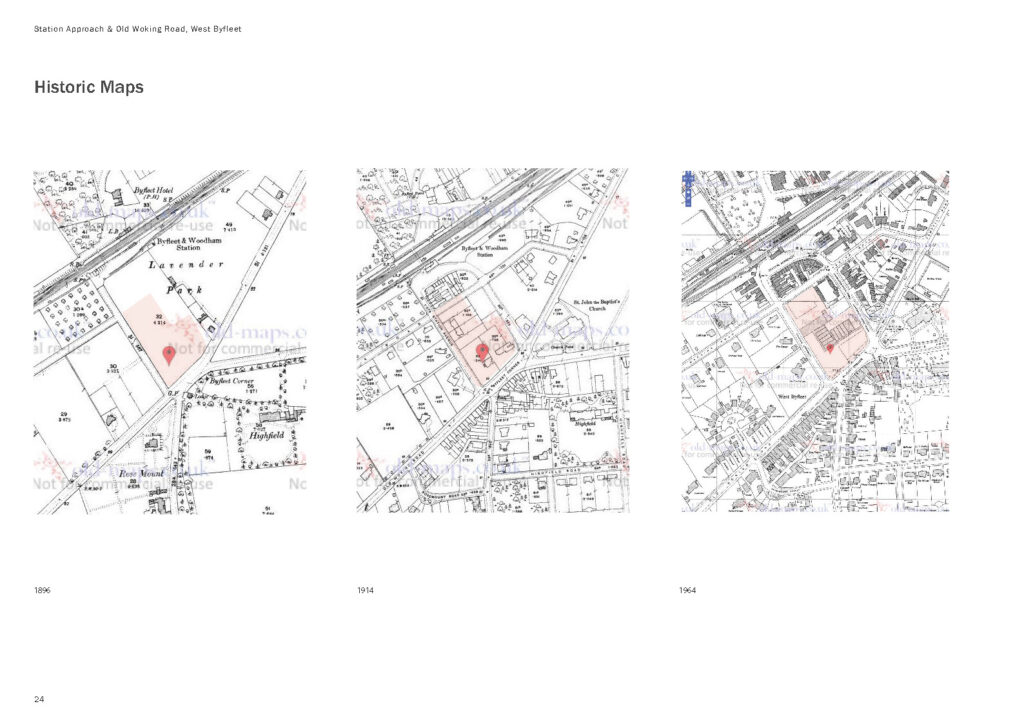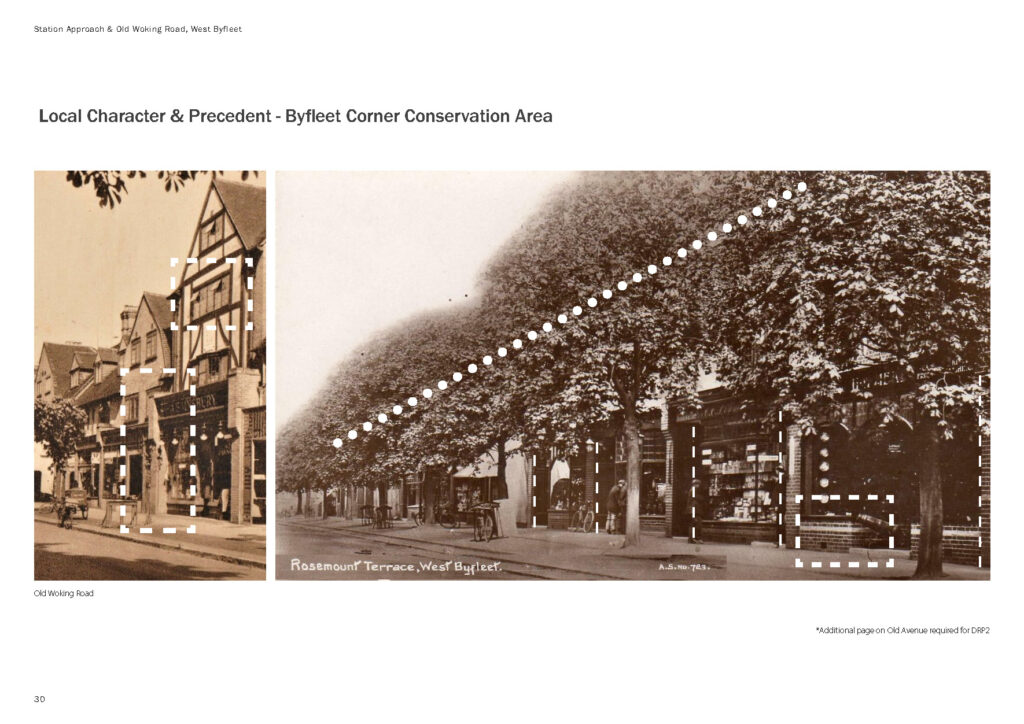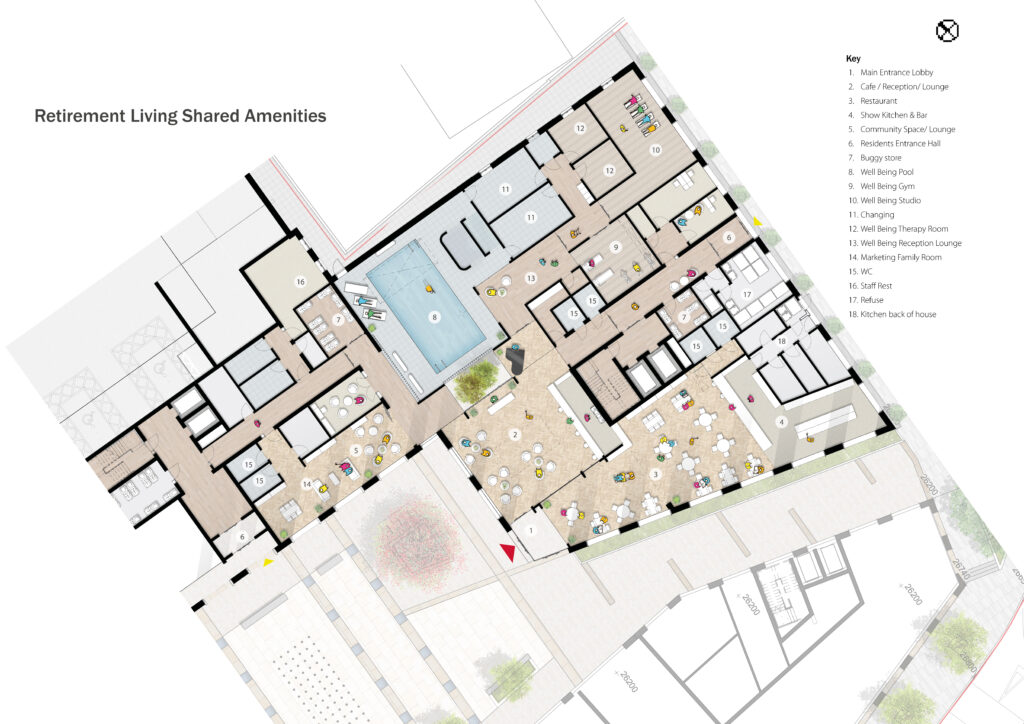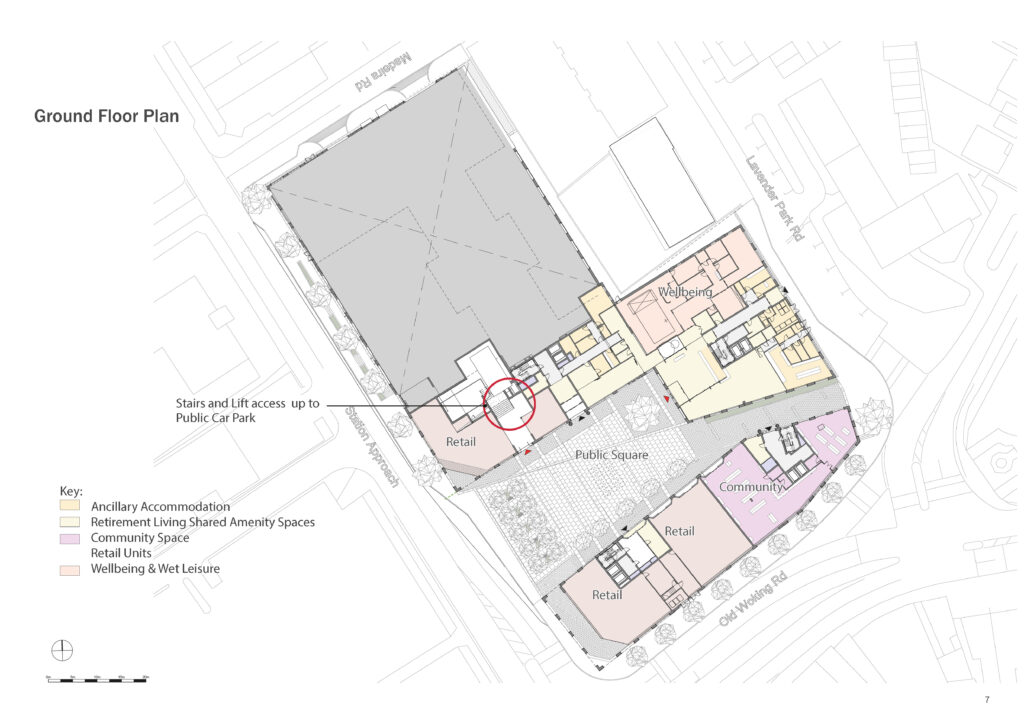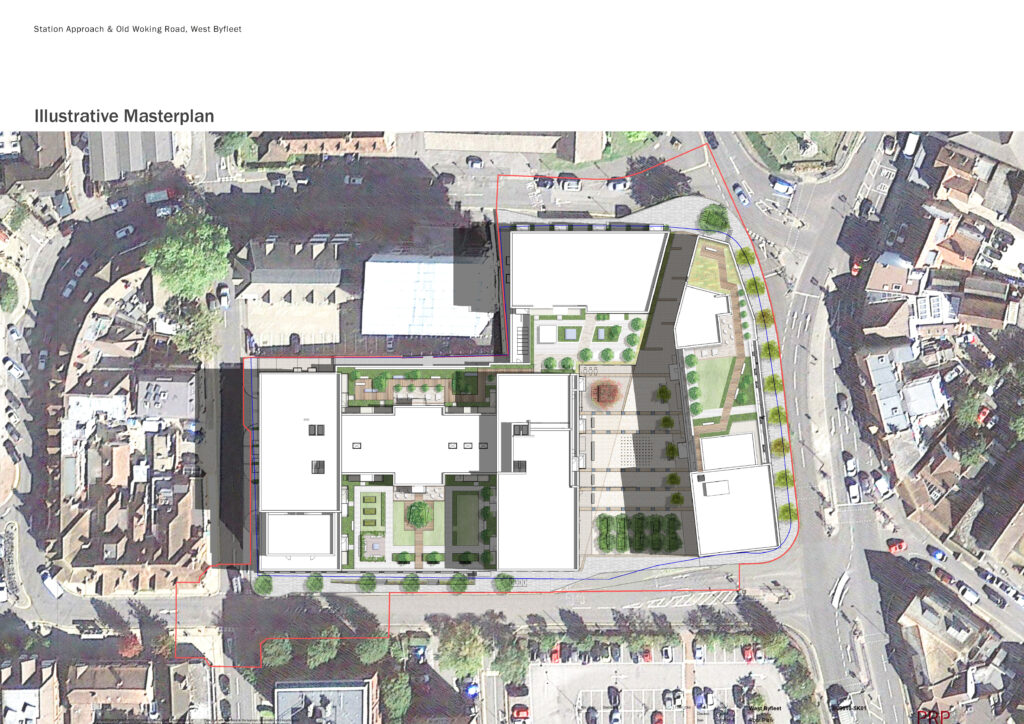Questions from the community
What is the expected completion date?
First phase completion is currently expected in the winter of 2024 with Phase 2 in Spring/Summer 2025. The first phase, including ground works, construction and fit-out will take about 36 months. However, methods such as off-site construction, modular builds and new technologies and materials may shorten this period. Our business is to create and manage thriving communities; we want the development phase to finish as quickly as possible without risking safety or standards.
How much will the apartments cost?
The set prices have not been confirmed yet. They will be aimed for local people and priced at local market conditions. There are also flexible finance options (purchase, rent, rent to buy and part buy part-rent) meaning that no matter your tenure, these apartments can be accessible to you.
How are you ensuring that sustainability is built into the design of the buildings?
Quite rightly, new buildings must be designed to very high standards. Collectively, we expect so much more from developments than used to be the case. This is not simply because materials have developed but also because we want our built-up areas to provide a much higher density, which reduces the demand on our countryside. New buildings must also have a much lower environmental impact, helping to counter the carbon legacy of much of the existing properties, commercial and residential. Today, our developments must be much, much more efficient. Not only the manufacture of materials but also the construction process and the operational elements too, must all meet stringent carbon targets.
Of course, one of the implications of an efficient building is that cooling as well as warming need to be properly considered and a suite of appropriate measures should be put in place.
Our designs include a number of sophisticated strategies so that the new development will make a positive, long term contribution to help West Byfleet achieve its environmental goals. For example, the balconies are integral to our sustainability strategy. They provide important passive cooling and shading to help the whole development achieve the carbon and well-being targets.
Botanical Place is a net zero carbon development. We have been offsetting our carbon emissions from the beginning and will continue to do so once it is open. The buildings will be powered exclusively by renewable energy and include green technology such as heat pumps, solar (PV) panels and electric vehicle charging stations. There will also be open-green spaces and an active tree planting scheme.
Will it be a dementia friendly community?
Yes. While the development is not a specialist dementia housing scheme and so cannot provide the environment required for advanced dementia associated with challenging behaviours, it will be designed and managed to work well for people in the earlier stages of dementia.
Will the balconies infringe on the privacy of residents in neighbouring buildings?
The configuration and location of the balconies required detailed consideration. Careful analysis of the geometry shows that properties on, for example, Camphill Road are not overlooked in any meaningful way. This is partly because of the obstructions and lack of potential sightlines but also because these properties are at a considerable distance.
Will the balconies detract from the view of St John’s Church?
PRP Architects’ design celebrates the presence of St John’s Church. There is, of course, a distinctive walk-though that creates a vista with the church at its centre. The design allows people to enjoy views to the church and its grounds from the public and private realm, and not only from within their cars as they pass by. The projecting balconies are an important part of this.
Our view is that the use of projecting balconies, for example on Juniper House, celebrates St John’s Church as a focal point, which it should be. The fact that the design of their metalwork reflects the motif found within the church is something people will be able to discover for themselves. This suggests a depth of thinking often lacking in design, adding heritage value.
Will the projecting balconies create safety issues for pedestrians walking below? Why can’t these all be inset instead?
Safety and wellbeing are at the very heart of RVG’s approach to everything it does so it should not be a surprise to find that the balconies and their use are comprehensively managed to ensure the highest possible safety standards. This includes making sure that there is no risk to passers-by or anyone else living, working or visiting the properties. RVG will maintain its management responsibilities for the development long after completion.
Who actually designed the buildings?
The aesthetic and design of the balconies is the work of our highly esteemed design specialists, PRP Architects. Of course, like all good architecture, their work was robustly critiqued, in our case by the South East Design Review Panel. Far from a committee process, the ‘crit’ is very much a part of the profession.
Ann-Marie and Simon spent considerable time in West Byfleet, which is only a few minutes from their design studio. Their knowledge and understanding of the area and its communities meant PRP Architects was able to fully consider the location, urban context, and local character.
In keeping with the essential criteria, our balconies embody simple embellishment and represent both an honesty and an appreciation for the outdoors that would be recognised by Pugin and Morris or Lutyens. Naturally, our location and purpose require a very different response than might suit other sites in the area.
Why are there now five buildings when the initial design had three?
We have designed the buildings to the exact specifications of the original drawings which received approval at the public consultations. However, the three separate buildings which form Botanical Place have been split up into five residential homes: Cassia House, Tea Tree House, Copper Pot House, Bergamot House and Juniper House.
How does the development reflect the Arts and Crafts movement?
Coming at the end of the 19th century, arts and craft was always more of a movement or ‘ethos’ than a single design style. The use of the land in a central location, close to the railway station and all amenities of west Byfleet’s village centre, plus the fact that the development also sustains a public square, car parking, green spaces and retail, calls for a design response that is necessarily more efficient. The character of the buildings’ design, with their robust use of arts and crafts decorations and embellishments, such as the balcony metalwork and screens, is more reflective of the functional and practical ethos of the movement than the use of the vernacular, which is perhaps an attribute that some people mistakenly think was more definitive of the English arts and craft movement.
Of course, one of the central tenets of the movement was what we would now call sustainability. For example, the ‘fifteen-minute world’: the idea that the amenities and necessities of modern life are within 15 minutes was first espoused by the movement’s proponents back in the late 1800s. These days it is an idea promoted by civic leaders and town planners the world over. The new development on the Sheer House site brings together the ideals of the movement in a way that looks forwards, acknowledging that the demands of future generations require a fresh approach.
Will there be any phasing?
The development will not be completed in distinct phases. Inevitably, some areas will be completed, in the sense of final decorating and installing fittings such as taps and cupboard handles, or planting shrubs and setting up flower gardens, ahead of other others.
Indeed, residents may start moving in before fit-out is completed in all blocks. However, we intend to construct each of the blocks simultaneously. This will compress the overall programme and reduce the time spent doing ‘noisy’ works.
Does the new proposed development meet the needs of all ages?
The apartments will be age restricted as the area has a growing, un-met need for housing options that suit older people. However, our goal is to develop a lively, multi-generational scheme that is appealing, active and sustainable. We believe this is a key part of the revitalisation of local high streets and village centres.
This is why the development will feature new retail units, a new replacement library, community facilities and a public square for all residents of West Byfleet to enjoy. RVG is determined that people of all ages feel at home in the centre of West Byfleet. We are already in discussion with local people to help involve and attract different groups and activities.
Will the health centre be expanded to cope with the influx of elderly residents?
As you would expect, RVG has met with local NHS managers and with representatives of the regional NHS, as well as with people from the private healthcare sector in West Byfleet to discuss potential challenges and opportunities that our development might present. With 196 apartments and 250-260 residents, our retirement community would only represent about 0.8% of the GP’s patient roll. Of course, in practice, this is an over-estimate as we envisage most of our residents will already be living in the area.
Madeira Road Health Centre, which currently has a combined total of around 30,000 patients on roll, already has plans to increase capacity. Separately, as many residents are currently living in the area, they will already be on the GP roll. Therefore, they will not be adding to parking needs.
Which of the Botanical Place facilities will be open for public access?
Many of the amenities at Botanical Place will be open to the public. The central public square will include an assortment of independent shops, public library, restaurant, and bar. There will be a community space designed to host West Byfleet’s local groups. Residents will be able to invite family and friends into the cinema room. Access to the wellness centre, gym and hydrotherapy pool are still under consideration.
Who decides what shops and restaurants will be included within the new development?
Our survey at the beginning of the year provided a clear indication of what retail options people would like to see. Our commercial team and placemaking specialist are taking a proactive approach to locating businesses who meet demand. We can only have businesses who want to be there, which will ideally be a mix of local retailers and bigger brands.
Is there a minimum or maximum number of restaurants or shops? For example, can there only be three restaurants?
We want there to be a good mix of shops and services on offer in the centre of West Byfleet and we are confident that our development can help contribute to this. Based on typical floor areas for a modest store, such as an independent boutique, we envisage perhaps 10-12 units.
Retail specialists suggest between 5 and 15 stores. However, we want to be sure that, as a landlord, we are not unfairly competing with other established business in the area.
Are residents going to be able to hear each other through the walls?
The walls of the apartments contain sound insulation and reverberation control from neighbouring homes. The windows will also have high standard glazing to promote a quiet and tranquil home environment.
Why does the communal area for the new blocks need to take up so much space that could otherwise be used for retail on the ground floor?
First, we need to recognise that providing too much retail space risks creating empty units, the sort of thing that is already blighting villages and towns as consumer habits change and evolve.
Second, we have always put an emphasis on community. We are looking forward to being able to play our part in accommodating some of the many community-led groups that we know are out there.
If the quantity of development underway at Broadoaks, including some retirement living, means you cannot sell all the units, will you be able to offer your apartments to the open market?
There is always a risk in a market economy – but nearly fifty years’ experience, careful market analysis and the ability to provide a range of tenures with different price points, including rental, means that RVG is confident that the community will be quickly established following completion.
Changing the purpose of the apartments from age-restricted retirement living to ‘general needs’ (for sale on the open market) would require RVG to submit a ‘change of use’ application to the council, something on which the wider community would be consulted. We are confident that there is enough demand from older people in the local area to ensure that we will not need to do this. And we are patient. Our customers are careful, considerate and, understandably, take their time before deciding to move in.
What controls will be in place to ensure that the development will remain a retirement village and not change character over time to include families, younger adults or general tenants?
The Section 73 application amends the existing consent to allow for a greater proportion of the residential development to be in the form of a retirement community – up to 100% of it, which is what we intend.
Different planning requirements will apply to the retirement community housing, so we will have to be clear about the mix of uses in our detailed (Reserved Matters) application which will follow. Once agreed, a legal agreement will limit use of the retirement community so that its use cannot be changed.
How many parking spaces per resident unit?
There will be 95 resident parking spaces and 196 resident apartments. We reached this number after commissioning research on the parking need across all RVG’s current residences. We also intend to provide a car club.
Will half of the flats not have parking entitlement, or will it be first come first served?
RVG will manage the allocation of residential parking spaces when selling and letting the homes. This is when people are deciding whether to move in or not.
Prospective residents, as in any other location in the country, will choose what sort of property they want. Their decision will be based on several factors, including the availability and nature of any parking spaces. People determined to maintain private car ownership will want somewhere convenient to park and won’t choose to move to the development if there is no parking permit available to them.
Will there be public car parking and if so, will there be parking charges?
There will be 67 public parking spaces. It has not been decided whether these spaces will be free or charged. There will also be spaces for charging electric vehicles.
Will there be dedicated parking for retail units?
Retailers will not be allocated parking spaces. Employers, including RVG, will be expected to provide their employees with an active travel plan to effectively and sustainability manage the transport needs of those working at the property. Customers can use the public parking that will be provided and other options in the area.
How will you prevent people connected to the next development from parking in the area – for example, residents, their friends or family members, shoppers and shop workers or the people working for RVG?
The development will cater for the parking needs of its residents and the parking can be managed to ensure capacity is used for staff and visitors where it exists. In addition, we will have at least 67 spaces, as is agreed in the existing outline consent, for use by the public and we will encourage alternatives to car-based trips, such as walking, cycling and public transport, wherever possible.
Why do you think that your proposal is sufficient when there is no evidence that the target market for a retirement community has less need for car parking?
RVG commissioned research from a specialist transport consultancy on actual parking need across RVG’s existing villages.
Even in locations that are more rural and less well connected (with less access to alternative modes of transport), the results show one and two-bedroom apartments are associated with 0.44 cars each. As we are proposing 200 units, this indicates a ‘need’ of 87 resident parking spaces. We are proposing almost 100 parking spaces. The spaces and the layout will be configured based on our understanding of the needs of older drivers.
How can we justify an amendment to the existing planning consent that reduces the number of resident parking spaces from the number currently agreed?
Our focus is on creating an exciting and thriving retirement community that contributes positively to the overall appeal of West Byfleet.
The amendments we seek in the Section 73 application will see a reduction in the number of households, a reduction in the number of people and a reduction in the number of people likely to own a car. In addition, research shows that residents of a development of this type and scale are unlikely to need more than 87 parking spaces.
Aside from the prevailing trends in public behaviour and government policy, our site is well located in terms of sustainable mobility options, sited as it is above and adjacent to a wide range of retail, health and leisure amenity. On top of this we will be encouraging residents and visitors to take up the various alternative options, including a car club, resident car pools, community transport, cycling and e-bikes. We have already had a positive response from a number of local people regarding charging points, e-bikes and car clubs.
What measures do you propose to make it safer and easier to turn right out of Madeira Road onto Sheerwater Road?
Our development replaces a large busy office building and retail shopping centre. This led to significantly more vehicle movements than our scheme will generate. Nevertheless, as part of our application we take account of any impact that our development might have on the local network.
What will RVG do so that the existing problem of excessive on-street parking is mitigated?
Many communities are challenged by on-street parking and it is unlikely that we can significantly alter the existing situation as part of our proposals.
In our experience tackling this requires clear joined up thinking and the support of all parts of the community. We know that our residents will share the same concerns as people already living here. Indeed, many of the people who move are already living in the vicinity. Naturally, we would support our residents to work with the local authority and other local people to help create better, safer streets.
Will vehicles used during the demolition and construction have their wheels cleaned before driving on the local roads?
Yes, there will be wheel washing facilities at the entrance to the site to ensure all lorries are cleaned before leaving.
How much will the management fee will be per year?
Due to the fluctuations in the cost of living, we are not able to set a management fee until we start off plan sales later this year.
Will Botanical Place be impacted by the financial issues at Woking Borough Council?
Botanical Place is owned by us and fully financed by our own investment. We are confident that our build programme will not be affected.
How will visitors enter Botanical Place?
Vehicles will enter and exit the lower floor and basement parking from Madeira Road. Pedestrians can access the Botanical Place entrance lobbies from the public square.
